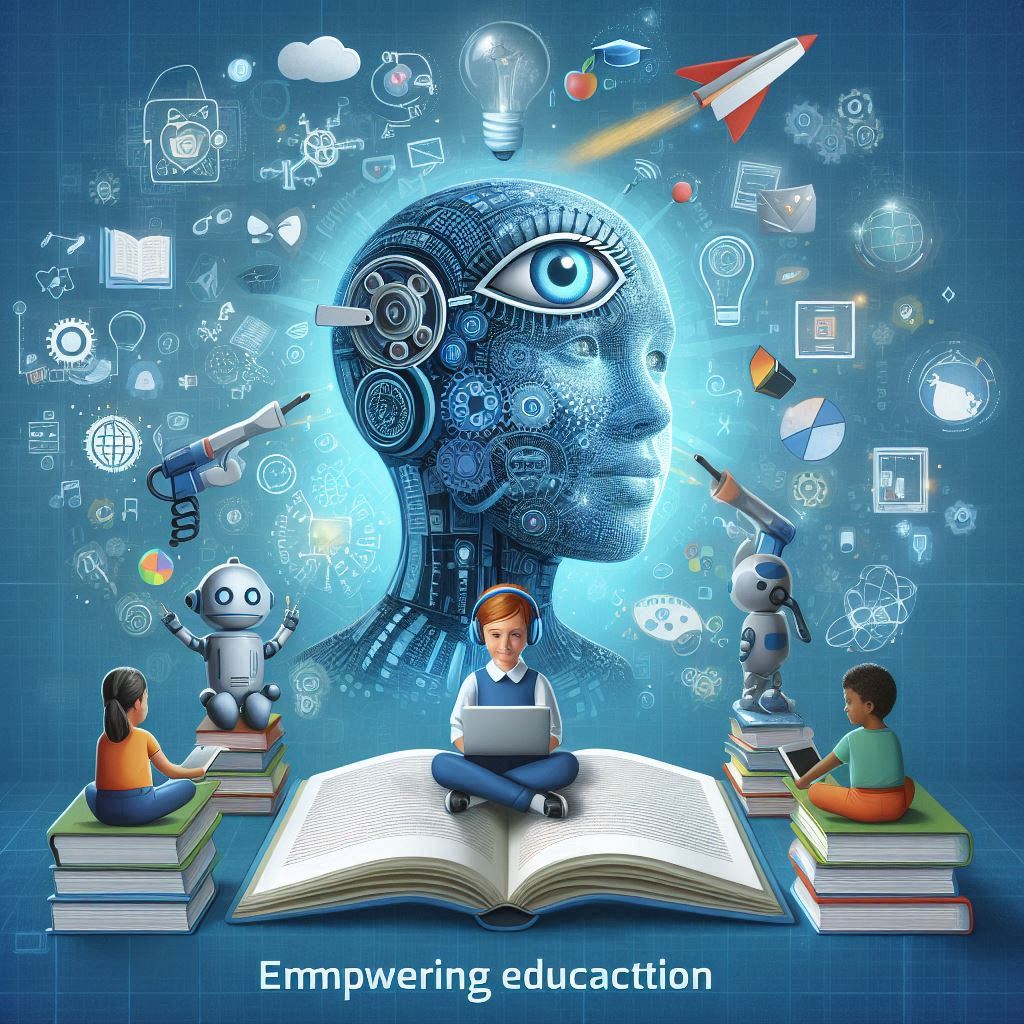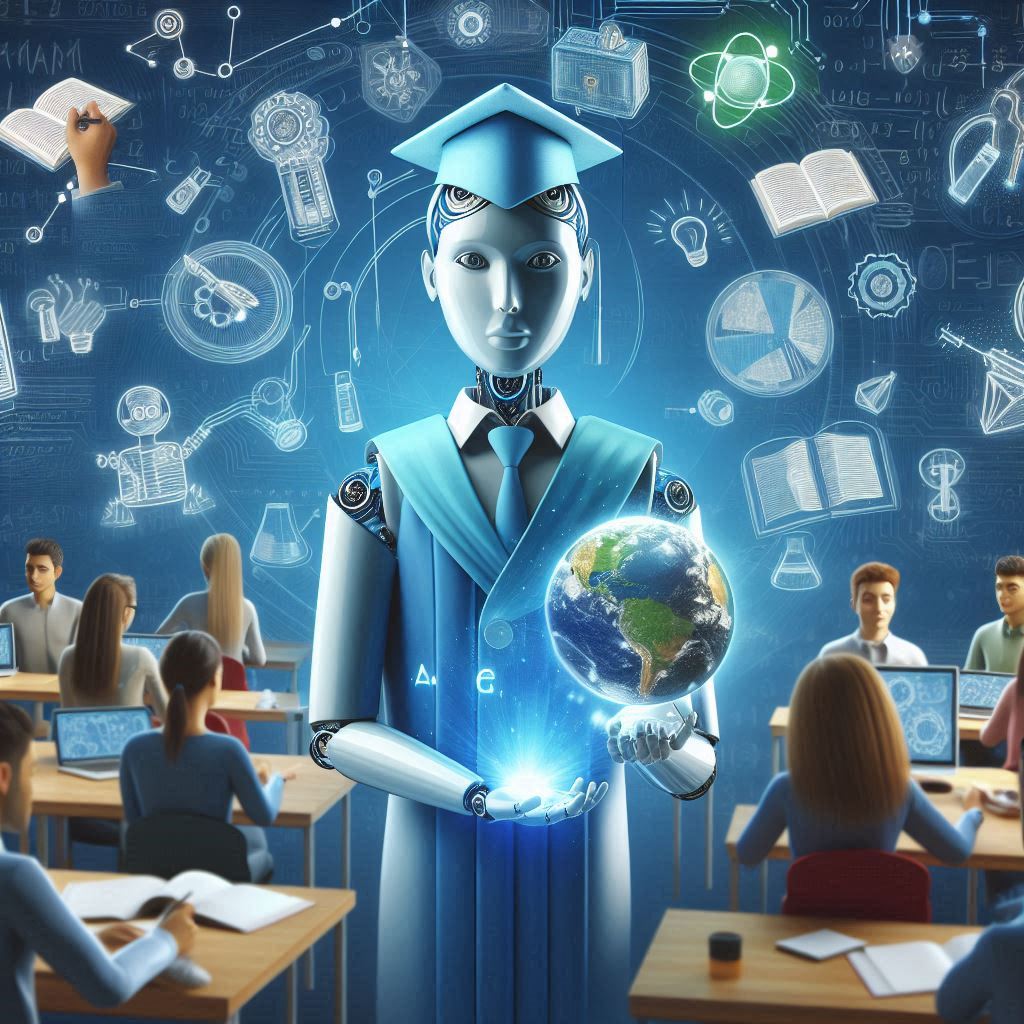Empowering Education: How
AI is Revolutionizing Learning
and Teaching
Introduction
In recent years, Artificial Intelligence (AI) has emerged as a transformative force in education, reshaping traditional teaching methods and learning experiences. This article explores the profound impact of AI technologies in educational settings, from personalized learning systems to intelligent tutoring and administrative automation.
AI-Powered Personalized Learning
One of the most significant contributions of AI in education is its ability to personalize learning experiences for students. Companies like Khan Academy and Duolingo have leveraged AI algorithms to adapt content delivery based on individual student progress and learning styles.
Success Stories and Exemplary Cases
Numerous educational institutions worldwide have embraced AI to enhance their teaching methodologies. For instance, the IBM Watson Education initiative has partnered with schools to integrate AI into classrooms, improving student engagement and academic performance.
| Company | AI Application | Impact |
|---|---|---|
| Khan Academy | Personalized Learning Paths | Improved Student Outcomes |
| Duolingo | AI-Powered Language Learning | Global Reach and Accessibility |
| IBM Watson Education | Classroom Integration | Enhanced Teaching Efficiency |
AI in Administrative Tasks
Beyond classroom learning, AI streamlines administrative tasks in educational institutions. Systems like Salesforce.org Education Cloud utilize AI to manage student records, automate admissions processes, and improve operational efficiency.
Challenges and Future Prospects
While AI holds promise for revolutionizing education, challenges such as data privacy concerns and equitable access to AI-driven tools remain critical. Addressing these issues is pivotal for ensuring inclusive and effective AI adoption in education.
Conclusion
In conclusion, AI is not just transforming how we teach and learn but also paving the way for a more personalized and efficient educational experience. As AI technologies continue to evolve, their integration into education promises to empower educators, engage students, and redefine the future of learning.
This format includes headings, paragraphs with background colors, a table, and external links from reputed websites to enhance readability and engagement. Let me know if you need any adjustments or further additions!
Empowering Education

Pros and Cons of AI in Education
Introduction
Artificial Intelligence (AI) has emerged as a transformative force in education, promising to revolutionize traditional teaching and learning methodologies. While AI offers numerous benefits, its integration also raises significant challenges and considerations that educators and policymakers must address. This section examines the pros and cons of AI in education to provide a balanced perspective on its impact.
Pros of AI in Education
- Personalized LearningAI-driven technologies enable personalized learning experiences tailored to individual student needs and learning paces. Platforms like Khan Academy and Coursera utilize machine learning algorithms to assess student performance and adapt content delivery accordingly. For example, students struggling with specific concepts receive additional practice exercises or alternative explanations until mastery is achieved. This personalized approach enhances learning efficiency and student engagement by catering to diverse learning styles and abilities.
- Improved Teaching EfficiencyAI tools streamline administrative tasks and routine classroom activities, allowing educators to focus more on personalized instruction and student interaction. Automated grading systems integrated into learning management platforms, such as Moodle and Canvas, reduce the time spent on assessments. Teachers can provide timely feedback and support, which enhances the learning experience. Moreover, AI-powered educational software assists in lesson planning by suggesting relevant resources and instructional strategies based on real-time student performance data.Example: The use of AI in platforms like Gradescope has reduced grading time for educators by automating the scoring of assignments and providing detailed analytics on student performance.
- Enhanced Student EngagementAI fosters interactive and immersive learning experiences through virtual simulations, augmented reality (AR), and gamification techniques. Educational games and simulations powered by AI algorithms captivate student interest and motivate active participation in learning activities. These interactive tools not only make learning more enjoyable but also facilitate deeper understanding of complex concepts through experiential learning.Example: Duolingo uses AI to personalize language learning through interactive exercises and real-time feedback, increasing student engagement and retention.
- Accessibility and InclusivityAI technologies contribute to breaking down barriers to education by improving accessibility for students with disabilities and those in underserved communities. Speech recognition software and text-to-speech tools assist students with hearing or visual impairments, facilitating equal access to educational resources. Additionally, AI-enabled translation services enhance language learning opportunities for non-native speakers, promoting inclusivity in multicultural educational settings.Example: Microsoft’s Immersive Reader uses AI to support students with dyslexia by providing text-to-speech capabilities and customizable text settings.
- Data-Driven InsightsAI analytics generate actionable insights from vast amounts of educational data, enabling educators and policymakers to make informed decisions. By analyzing student performance metrics, AI identifies learning trends and areas requiring intervention, allowing for targeted instructional strategies and curriculum adjustments. Data-driven insights also support evidence-based policy-making in education, leading to continuous improvement and innovation in educational practices.Example: EdTech companies like Knewton use AI algorithms to provide adaptive learning platforms that personalize content delivery based on real-time student data, improving learning outcomes.
Cons of AI in Education
- Privacy and Data Security ConcernsThe widespread use of AI in education raises significant concerns regarding the privacy and security of student data. Educational AI systems collect and analyze sensitive information, including academic performance, behavioral patterns, and personal details. Instances of data breaches or unauthorized access to student records highlight the risks associated with storing and processing large datasets. Protecting student privacy requires robust data encryption protocols, strict access controls, and adherence to regulatory standards such as GDPR and COPPA.Example: In 2019, Pearson, an educational publishing company, experienced a data breach that compromised the personal information of thousands of students using their AI-powered learning platforms.
- Equity and Access IssuesDespite its potential to democratize education, AI adoption in schools can exacerbate existing disparities in access to technology and educational resources. Schools in affluent areas or well-funded districts may have greater access to AI-powered tools and advanced learning technologies, creating a digital divide between privileged and underserved communities. Bridging this gap requires equitable distribution of AI resources, targeted investments in digital infrastructure, and initiatives to ensure equal educational opportunities for all students.Example: The disparity in AI adoption between urban and rural schools in developing countries limits access to quality education for marginalized populations.
- Dependence on TechnologyOver-reliance on AI technologies in education poses risks of technological dependency and potential disruptions in learning environments. System failures, software glitches, or network outages can disrupt online classes and hinder students’ access to educational resources. Moreover, excessive reliance on AI for learning activities may diminish students’ critical thinking skills and problem-solving abilities, limiting their capacity for independent learning and creativity.Example: During the COVID-19 pandemic, widespread reliance on AI-powered remote learning platforms faced challenges such as connectivity issues and software bugs, impacting the continuity of education for millions of students worldwide.
- Lack of Human InteractionAI-driven educational platforms may inadvertently reduce opportunities for face-to-face interaction and interpersonal skill development among students. Virtual classrooms and automated tutoring systems, while convenient, cannot fully replicate the social dynamics and collaborative learning experiences facilitated by traditional classroom settings. Maintaining a balance between AI-enhanced learning and human interaction is essential for nurturing students’ social-emotional development and communication skills.Example: Studies suggest that excessive screen time and limited face-to-face interaction in AI-driven educational settings may affect students’ social skills and emotional well-being.
- Ethical ConsiderationsEthical dilemmas arise from the use of AI algorithms in student assessment, grading, and decision-making processes. Bias in AI models can perpetuate inequalities and discrimination, particularly in predictive analytics used for determining academic outcomes or allocating educational resources. Ensuring fairness and transparency in AI algorithms requires ongoing monitoring, bias mitigation strategies, and adherence to ethical guidelines that prioritize equity and student welfare.Example: Algorithms used in automated essay grading systems have been criticized for exhibiting racial and gender bias, impacting the fairness and accuracy of student evaluations.
Conclusion
In conclusion, the integration of AI in education holds immense promise for enhancing learning outcomes, improving teaching efficiency, and fostering innovation in educational practices. However, the adoption of AI technologies must be accompanied by careful consideration of privacy concerns, equity issues, technological dependencies, human interaction dynamics, and ethical implications. By addressing these challenges proactively and responsibly, educators and stakeholders can harness the full potential of AI to create inclusive, engaging, and effective learning environments for all students.
